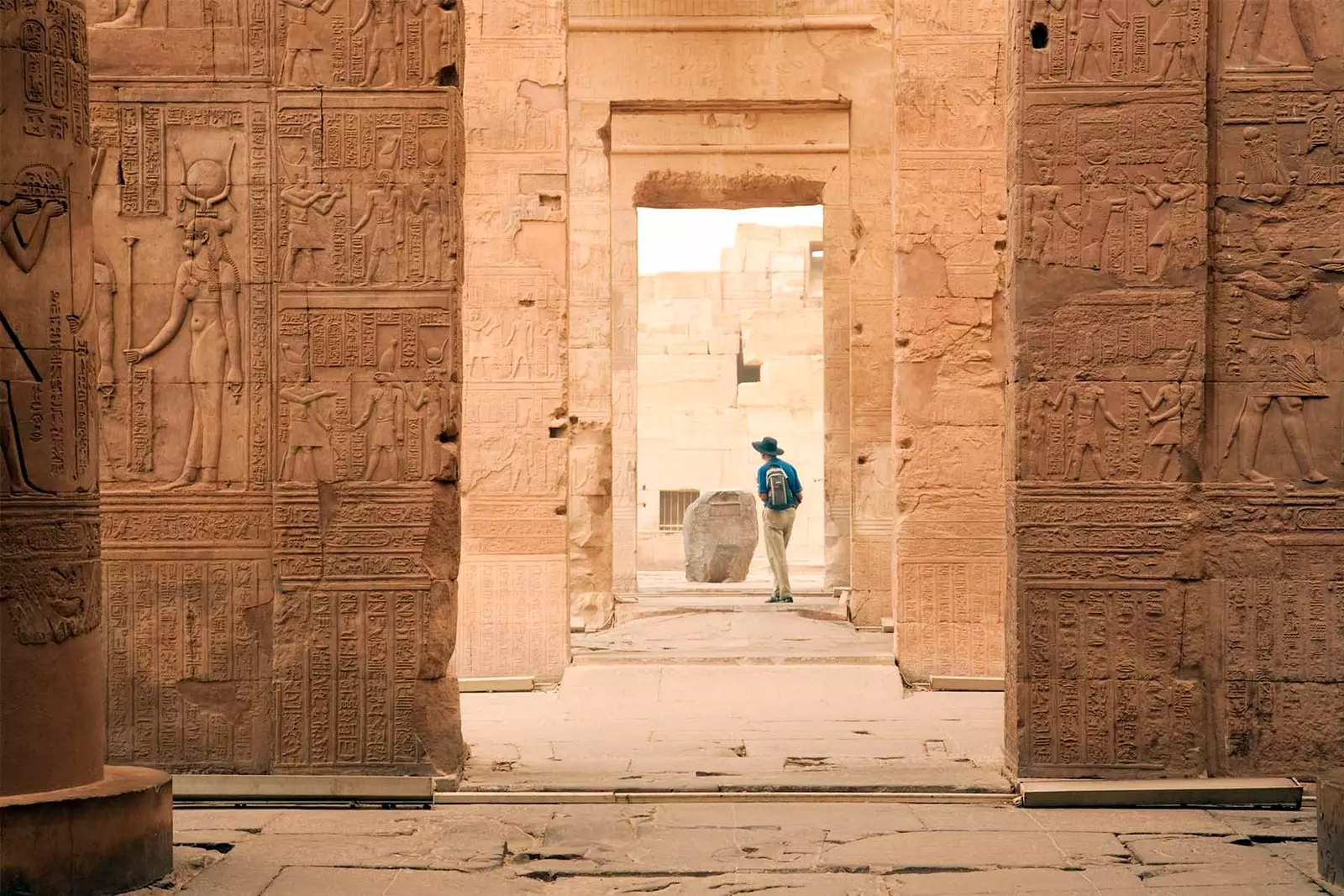
Egypt, a necessary destination
We bundled the blanket to the head to do the classic tour of Egypt: four days Nile cruise from the south of the country and three in its capital, Cairo.
As you know, this destination is brimming with history on all four sides, and its highlights are shaped like mummies, temples, pyramids, hieroglyphs and mosques.
There is a lot to see, so be careful, there will be no truce in this plan!
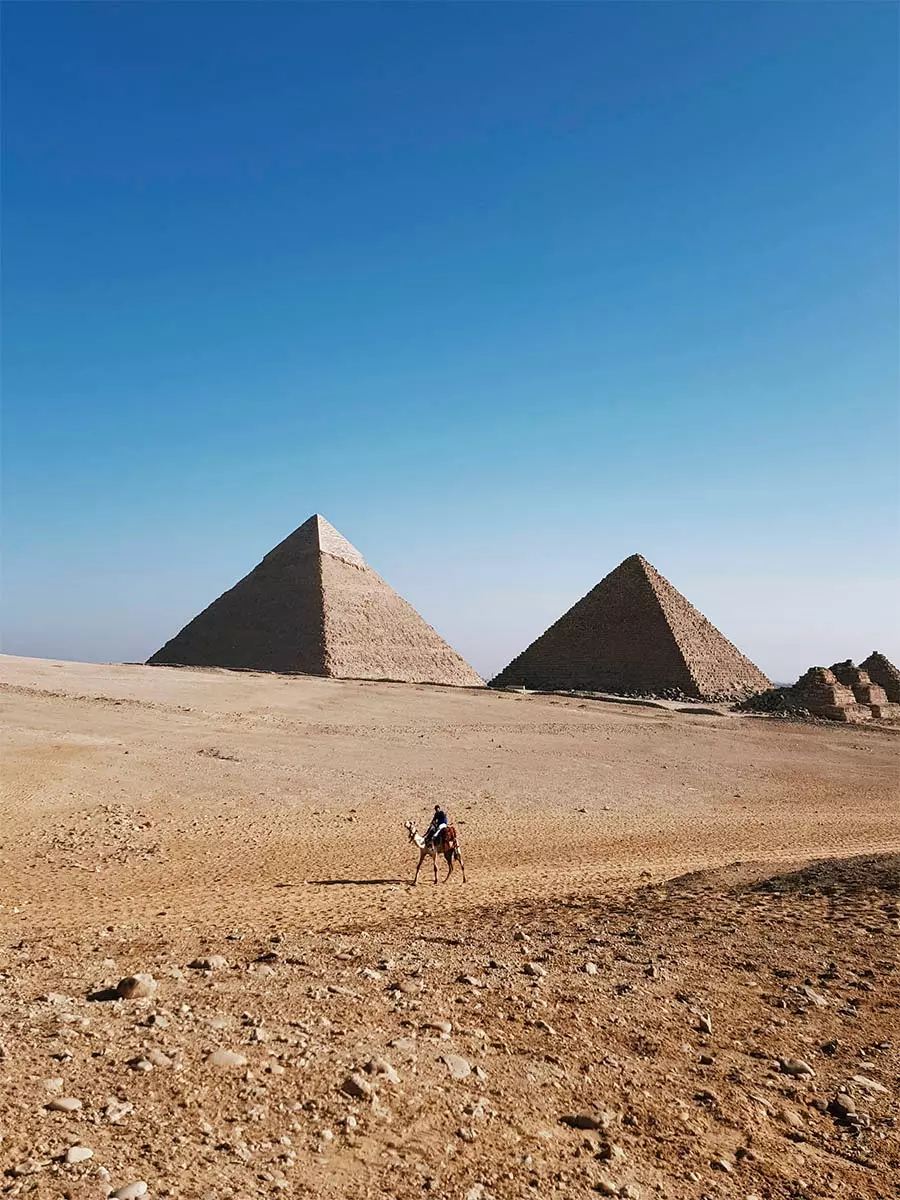
You will finally see the landscapes you have been dreaming of all your life
DAY 0: MADRID-ASWAN
This first day, like the last, does not really count, since we will spend between planes, airports and cars.
After landing in Cairo, it's time to catch another flight to Aswan (in the south of the country) . There, we will rent a car and soon find out that the traffic rules here are very different: basically, they come down to play the Claxon for all.
We arrived late at night cabin of our cruise ship, the Radamis I, stranded on the banks of the Nile, where awaits us dinner and a bed that we are only going to taste three hours.
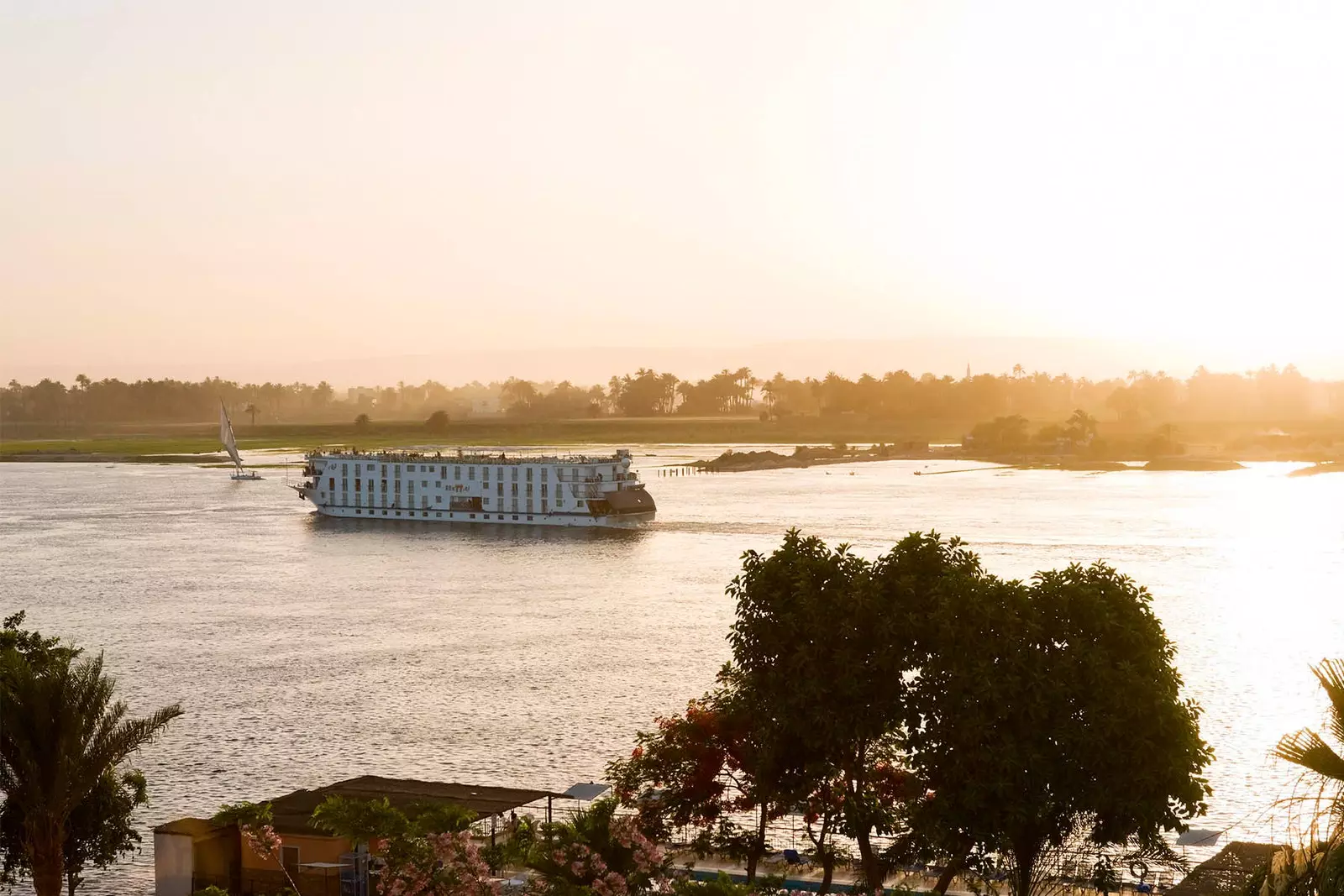
Next stop: the Nile
DAY 1: GIANT TEMPLES
You have to get up at four in the morning to go to Abu Simbel . If we manage to keep our eyes open during the journey, karma will reward us with an idyllic picture of the sunrise in the desert.
By skirting the temple from afar and observing its impressive and iconic entrance in the middle of the mountain, with the four gigantic figures sitting side by side. Ramses II, we will know that the effort has been worth it: pure history unfolds before us.
The interior of the place can be visited and, in theory, it is forbidden to take photos so as not to damage the hieroglyphs that adorn its walls. However, many people do them by paying the security guard a baksheesh, a tip that we will be asked several times throughout the trip.
Abu Simbel is located on the banks of the also gigantic artificial lake nasser , a consequence of the construction of the aswan dam (one of the largest on the planet) on the waters of the Nile.
Back in Aswan, a boat takes us through the waters of this river to the Philae Temple , which in ancient times was located on the island of the same name.
With the construction of the dam, it was submerged. Therefore, the temple had to be moved stone by stone to another small island, as happened with other constructions (among them, the Temple of Debod , which was given to Madrid).
Both the walk through its remote walls and the water transfer are magical, as if we had traveled in time as well as in space.
We eat on the cruise heading to Kom Ombo, population where we will visit the temples dedicated to the gods Sobek and Haroeris. At its gates, we hear the imposing call to prayer that is emitted amplified from the minarets of the mosques.
That night we discovered how early it gets dark in egypt at this time (it's barely 5:30 p.m. and the sun has already gone down), but it's fascinating visit the temples at night.
Its statues and reliefs, illuminated by spotlights, create play of light and shadow of the most photogenic that makes us immerse ourselves completely in the halo of unreality that emanate
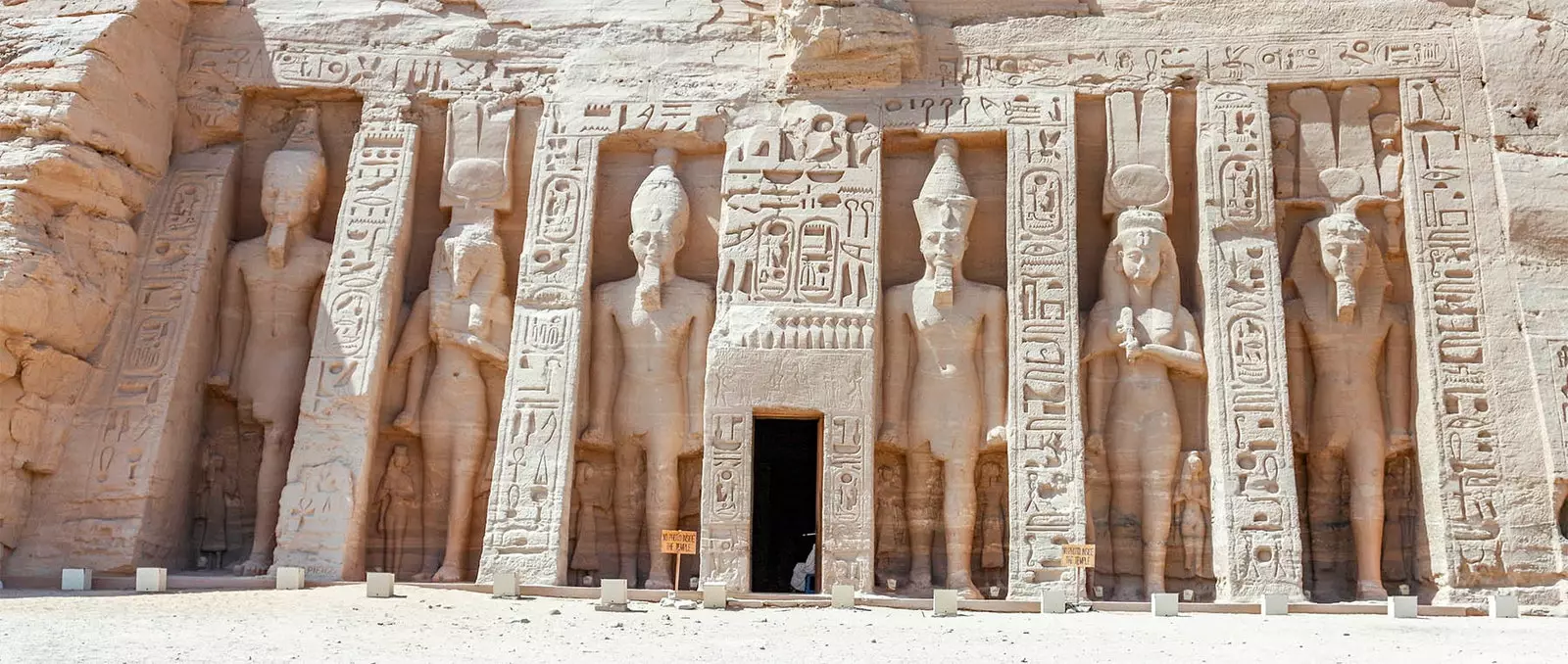
The shocking entrance to Abu Simbel
DAY 2: LANDSCAPES AND CARRIAGES
we wake up in Edfu, where the carriages wait for the tourists to take them to the temple of the god Horus. Take a break and enjoy the views from the top floor of the cruise ship (with terrace, sun loungers and swimming pool) is also a recommended option.
We watch enthusiastically landscapes of the bank of the Nile, where the greenery of the plantations contrasts with the yellow of the desert mountains, until we reach our next destination: Luxor, ancient capital of the country built on the ruins of Thebes, with a population of about 200,000 inhabitants, in front of the ten million of Cairo , current capital.
Luxor has, according to ramses , our enthusiastic guide, a third of the world's monuments, so we take advantage of the afternoon discovering one of the most impressive: Luxor Temple.
The entrance is presided over in a pharaonic way by a gigantic obelisk and the colossi of Ramses II and, inside, the impressive colonnaded courtyards and the mosque , built while the temple still lay underground and respected in its subsequent reconstruction.
Then, we explore the city in an impossible trip on the back of a horse-drawn carriage. The moment he gets inside the narrow streets of the souk is the most surreal.
The day ends with tea and smoking shisha next to our guide, on the terrace of one of the central cafes.
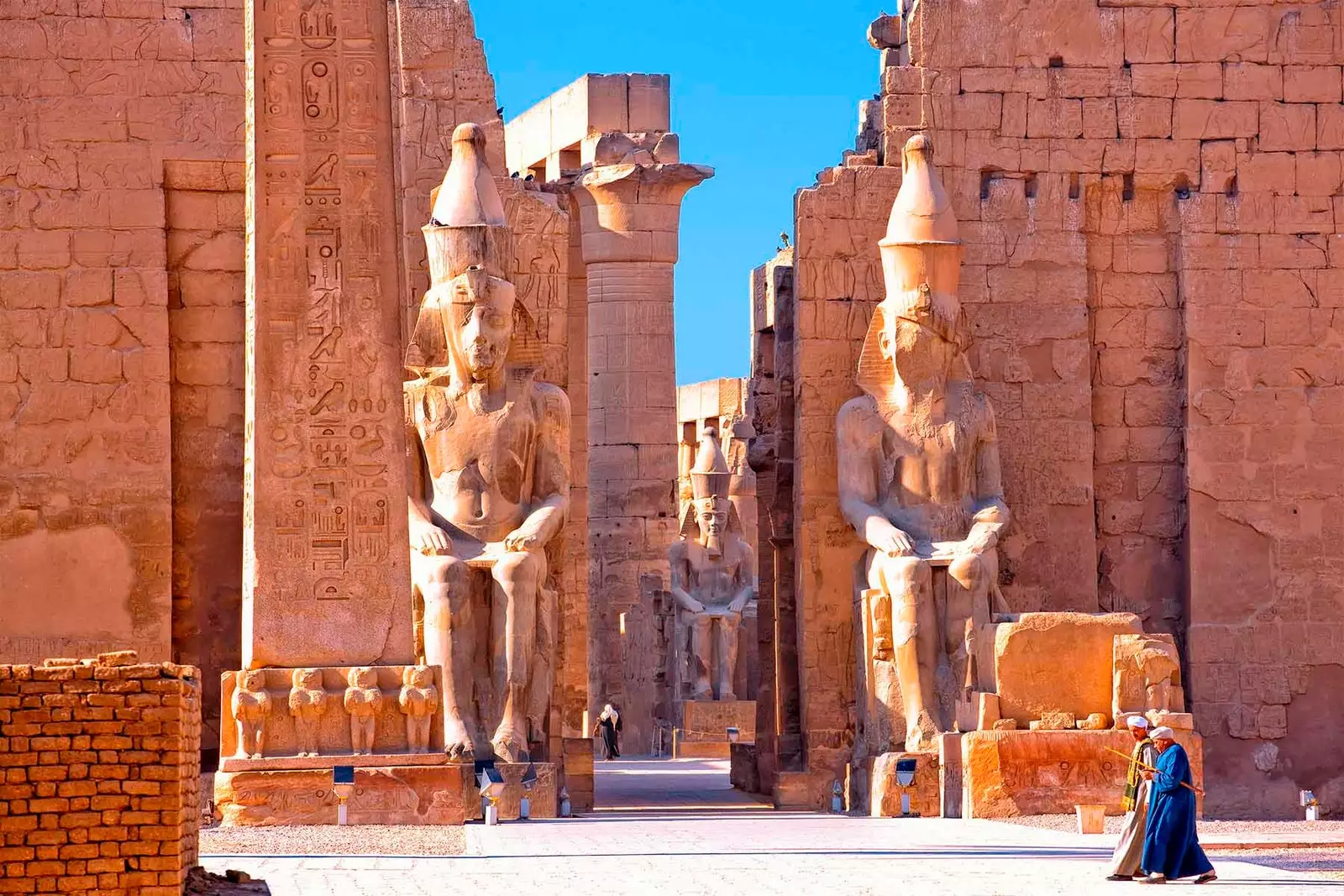
The magnificence of Ramses presides over the Temple of Luxor
DAY 3: COLOSSI AND PHARAONIC TOMBS
Today we visit the mythical King's Valley , where the famous tomb of Tutankhamun.
Before arriving, it is advisable to use Solar protection and make the de rigueur stop for the snapshot in front of the Colossi of Memnon, stone giants that announce the arrival to the historic area from the other side of the Nile.
The Valley of the Kings is one of the most interesting experiences of the trip, since it includes the visit to several underground pharaonic tombs.
go down their steep ramps until reaching the burial chambers, discovering the details of the walls covered with bas-reliefs and hieroglyphics, it is the most enriching (as long as we are not claustrophobic), and it will give us an idea of what their famous thieves by assaulting them.
In the Valley, the Hatshepsut Temple, dug up on the mountainside in Deir el Bahari, takes your breath away: two heights of columns adorned with statues which are accessed by a ramp where no one wants to stop taking a photo.
We say goodbye to the day with the **night visit to the Hotel Marsam**, built on two floors of adobe and with a huge courtyard full of aromatic plants and trees, in whose cozy rooms the archaeologist once stayed Howard Carter.
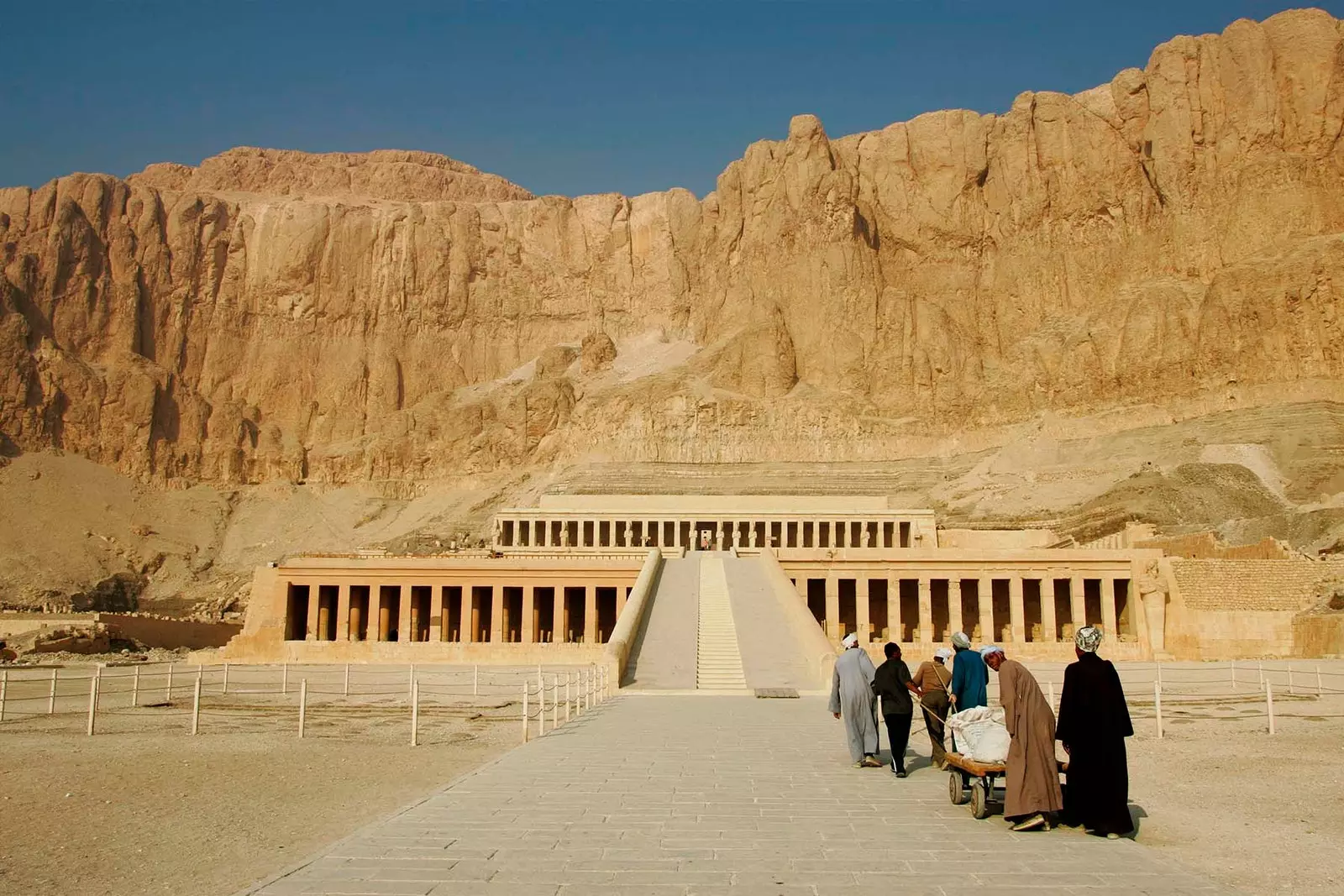
Hatshepsut's Temple takes your breath away
DAY 4: MOVIE TEMPLES
The stay in Luxor (perhaps the population with more charm of the trip) culminates with the morning visit to the karnak temple, joined to Luxor by three kilometers of sphinxes faced as those of The endless story.
Speaking of cinema: this is one of the most recognizable locations in death on the nile , adaptation of Agatha Christie that suits see before the trip to open mouth.
In the courtyard of columns, place fantastic Where our necks will end up hurting from looking up so much, the famous scene of the assassination attempt takes place. And if we turn our eyes towards the stone beetle on the shores of its artificial lake, we will see dozens of tourists performing a curious ritual consisting of go around several times to find fortune.
After eating, it's time to fly again until Cairo, where, even before landing, the huge traffic due to the kilometers rows of cars seen from the plane.
However, everything is forgotten arriving at the hotel Mercure Cairo Le Sphinx , when we manage to guess the gigantic pyramids silhouettes In the darkness of the night. There they wait for us the next day.
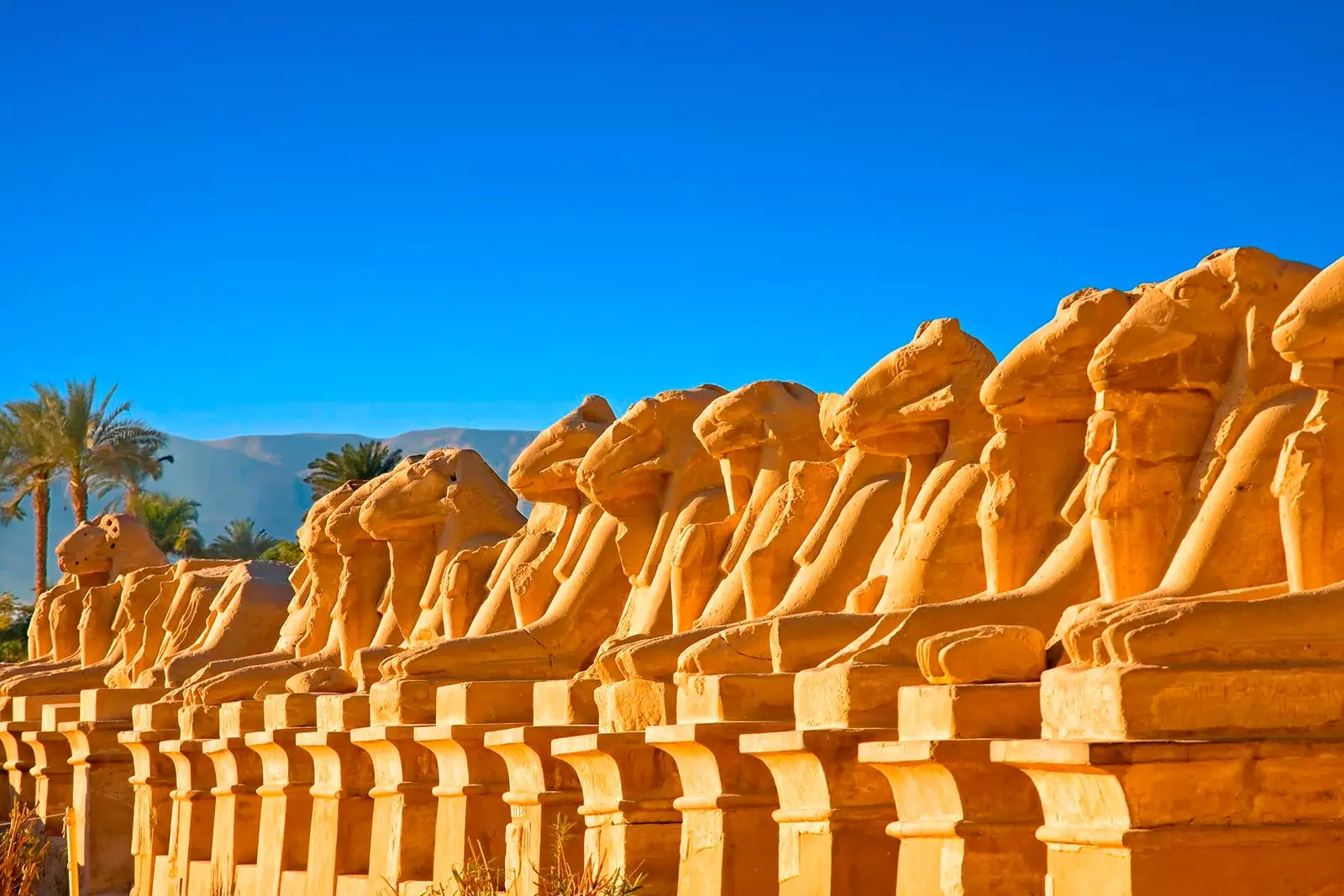
Like in 'The Neverending Story'
DAY 5: PYRAMIDS AND SPHINXES
The morning starts off strong with a visit to the famous pyramids of Cheops, Khafre and Micerinos, that moment in your head whenever you thought of Egypt... except for the fact that they are not in the middle of the desert, but on the outskirts of the city.
We start by closely appreciating Cheops, the largest of the Egyptian pyramids (Kephren seems taller, but that is because it was built higher) and the oldest of the seven wonders of the world, besides the only one that still lasts. Afterwards, we have some free time to take photos at the feet of Khafra, where, however, we will be the ones photographed by dozens of children who are out hiking and enthusiastically ask us for permission to take a selfie.
We visit the interior of Menkaure, which is an experience similar to that experienced in the tombs of the Valley of the Kings, but more claustrophobic, much less accessible and, of course, less impressive, lacking hieroglyphics.
The visit ends with the most popular monument in the country: the Great Sphinx of Giza, whose 20 meters high and 57 long we can observe from very close. The place has been the subject of various restorations , a theme that always raises opinion division , as many Egyptologists defend the non-intervention to keep track of time.
After a commercial stop in a papyrus shop, it's time to go to valley temple , built to the east of the pyramid of Khafra and kept in fairly good condition.
We continue our route in the memphis necropolis, capital of the ancient Pharaonic Empire, of which only few remains, and we end the day sakkara, where you can see the famous Step pyramid.
After an exhausting day, during which we have been about ten hours of excursion, we suffer from an overdose of egyptology data...
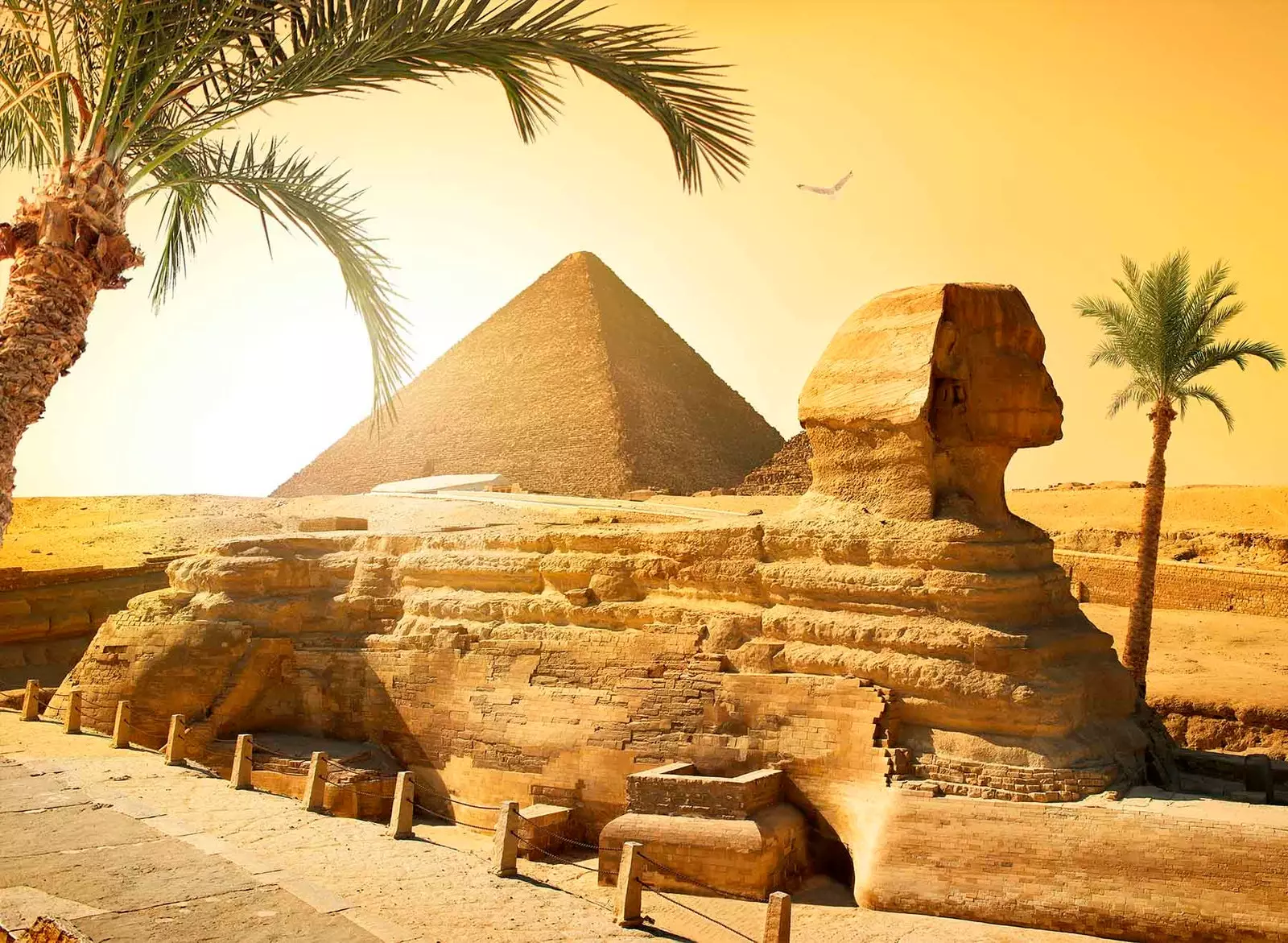
The Great Sphinx of Giza, the most popular monument in the country
DAY 6: MOSQUES, MUMMIES AND BAZAAR
Already from the car, we observe the gloomy city of the dead (a graveyard inhabited by homeless people) before landing at the foot of the Saladin Citadel, where we will dive into medieval islamic cairo up to the famous alabaster mosque , one of the most beautiful in the world.
both his outdoor patio paved like their interior carpeting we will have to walk them barefoot, something that we will forget looking at its innumerable details. Afterwards, we headed to the Coptic Quarter , which we will enter by going down some ladders similar to those of an underpass.
We move away momentarily from the Muslim religion to see the Christian churches of San Sergius , built on a crypt in which, they say, the holy family took refuge fleeing from Herod ; and of Saint Barbara , with curious figures of the Virgin Mary made with light wires . We also visit the ben ezra synagogue , the only stop related to the Jewish religion.
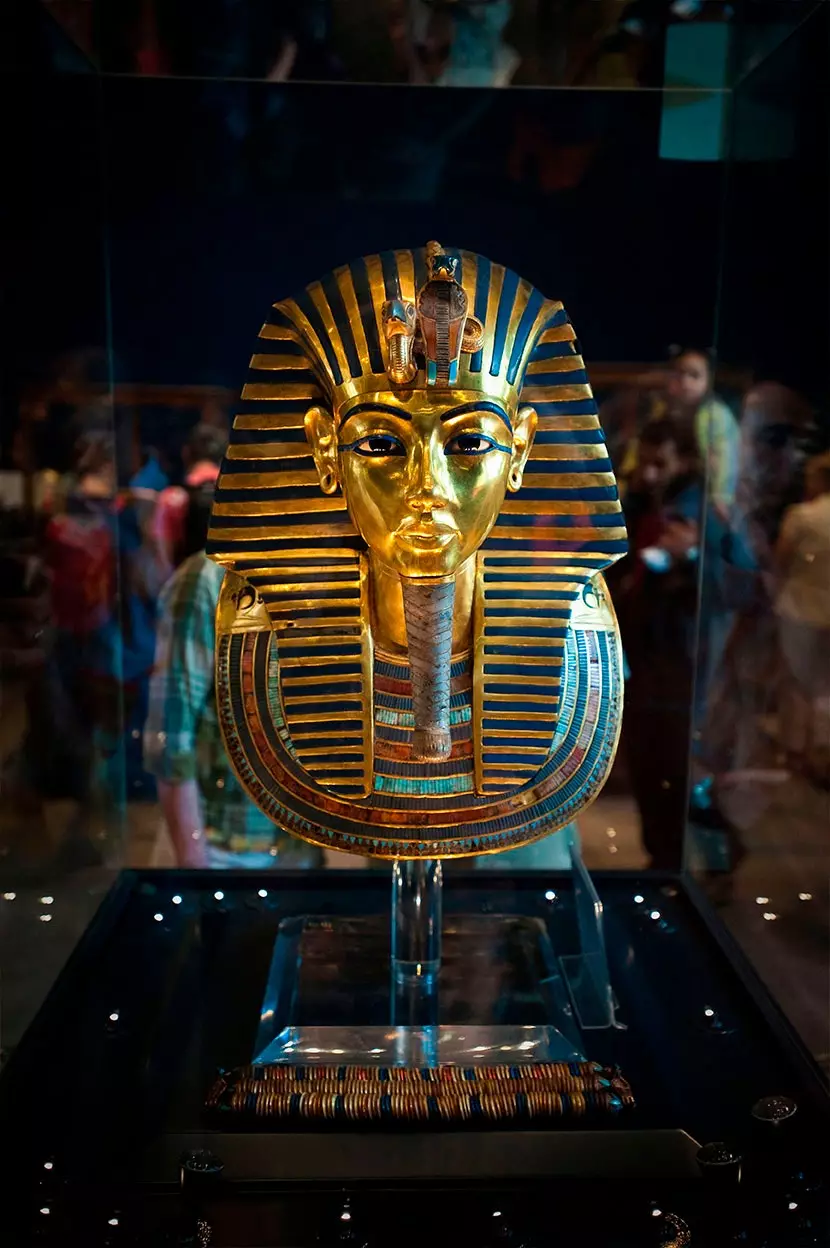
The famous mask of Tutankhamun
The next is buy presents in the famous Khan-al-Khalili Bazaar, a huge market with streets full of souvenirs: miniature pyramids, t-shirts, fridge magnets, key rings, incense... Recommendation: haggle, but no offense.
The express course in Egyptology ends with a visit to the ** Egyptian Museum ,** where we will finally see the famous tutankhamun mask , exhibited in its own room where photos cannot be taken, along with all the findings from the tomb.
We also delight in the contemplation of a good number of mummies , which are in a separate room where you have to pay cash Supplement, something worthwhile if we want to see a dozen of embalmed remains in perfect condition conservation.
We said goodbye to Cairo visiting his colonial center together with our local guide, where we sit on a terrace to drink tea, smoke shisha and eat one of the best falafel of our life.
Tomorrow (day 7) we already know what awaits us: early morning, car, airport, controls and flight to Madrid.
However, right now we avoid thinking about it, and We enjoy of a dreamlike evening above the roofs of the city.
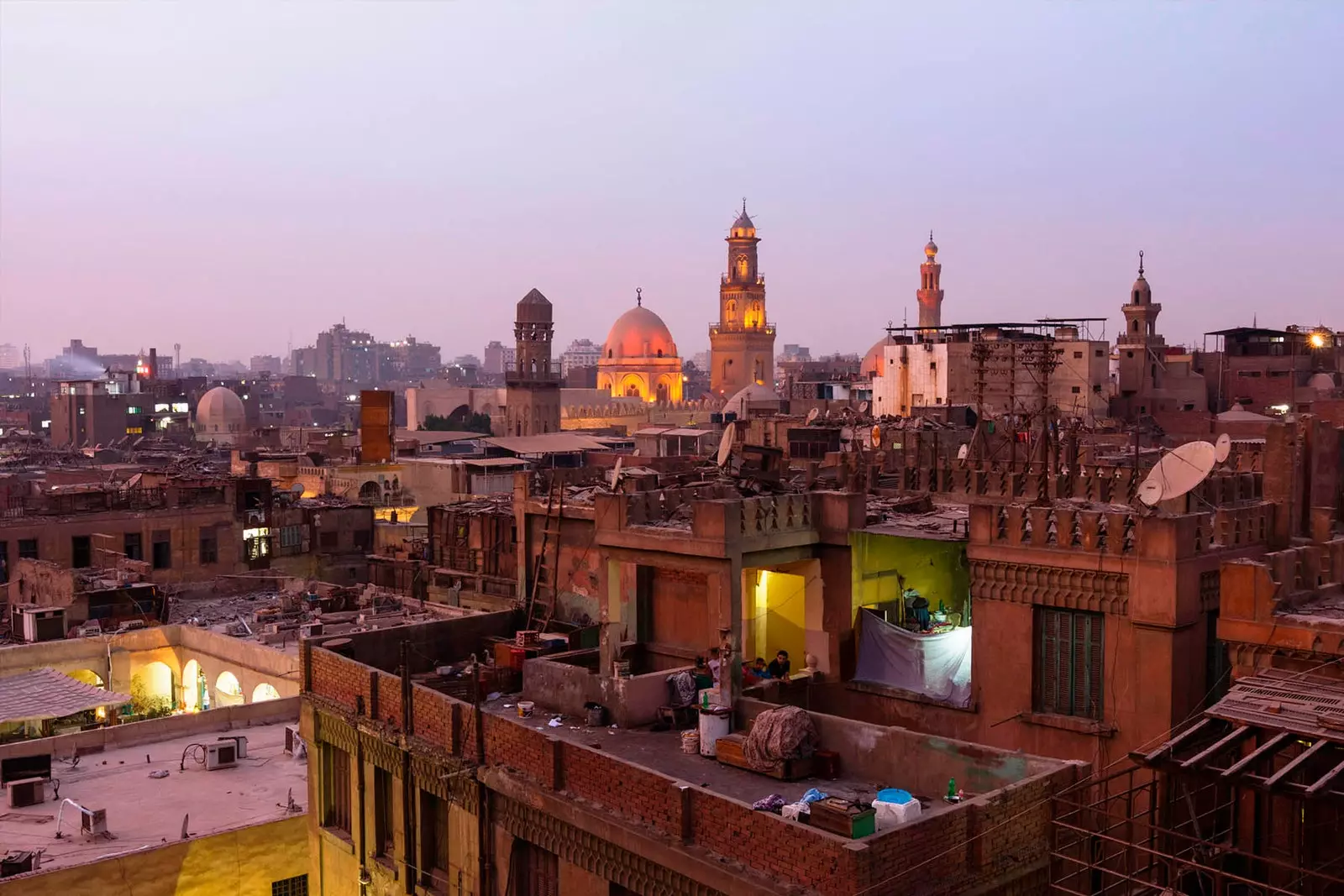
Tomorrow will be another day
